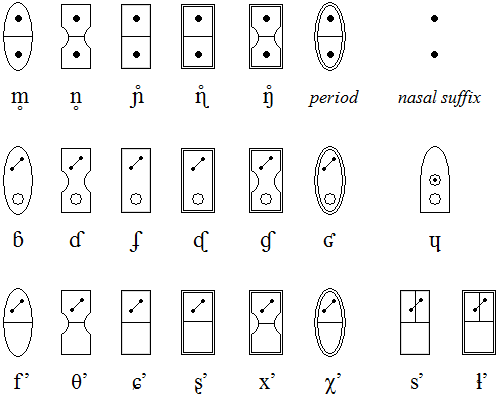This script follows after Darian in a series of regularly-formed alphabets founded on phonetic principles. The name comes from that ancient alloy made of silver and gold, and suggests a mix of pre-classical epigraphy and modern phonology.
Consonants
The consonants are all made with enclosed shapes, their frames matched to regions of articulation. Within the frames are various points, or rivets, or bumps, which identify the manner of articulation. Plosives are given forms which are reminiscent of plates being bolted hard to a surface. Devoicing is shown with a middle horizontal. The velar series ranges from /k/ to /q/ position, depending on adjacent vowels (front or back). The glottal region includes some “most rear” phonemes.
The fricatives are given simpler internals, since their sounds are freer, softer and continuous. Note the way the extra sibilants are used in the affricate situation. Semivowels have symbols related to their vowel form.
Vowels
The vowels use point motifs similar to those found within consonants, but they have no enclosing frame (their sound is free of constriction). The tone suffixes may be used together to show rise and fall.
The shapes for the vowels are based on structures revealed in spectrograms of the spoken sounds – the grouping of their formant frequencies. For example, here are spectrogram patterns for the vowels [i], [æ] and [o], where the vertical axis shows frequency in Hz and the horizontal axis is time:
Extensions
Mattias Persson suggested various extensions to the system described above. They are realized without much fuss, using the basic elements already given: devoiced nasals, implosives, fricative ejectives and another semivowel. The “voiceless throat nasal” can represent a more definite caesura than the “voiced” equivalent. A nasalizer (coming after vowels) is made from the nasal internals.
Sample text
This is the first line of Shakespeare’s sonnet 18 (yet again), phonetically spelt out using Elektrum, for comparison with versions of SIGIL etc:
“Shall I compare thee to a summerís day?”
A version of this page can also be found on
Omniglot.
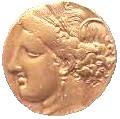

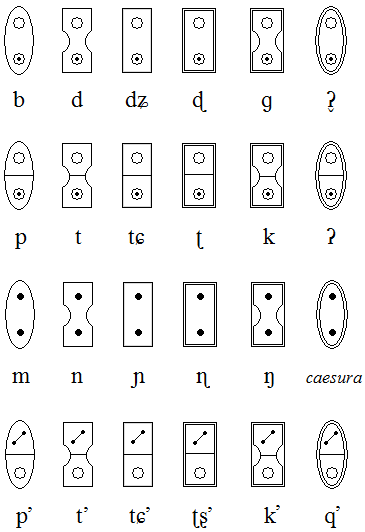
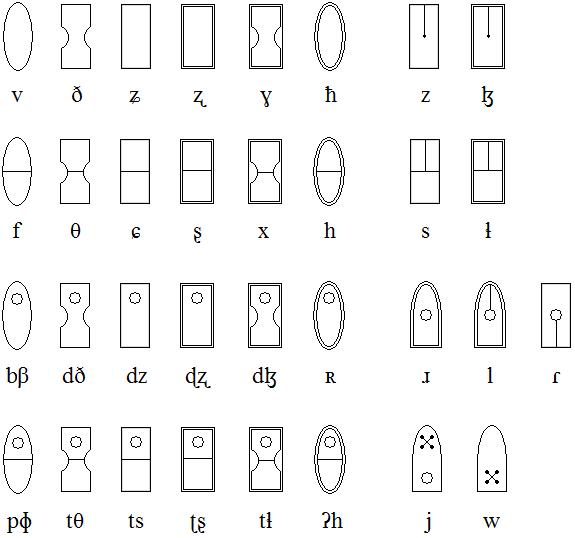
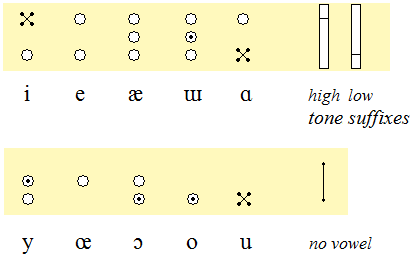
![spectrograms of [i, ae, o]](spectro.png)
